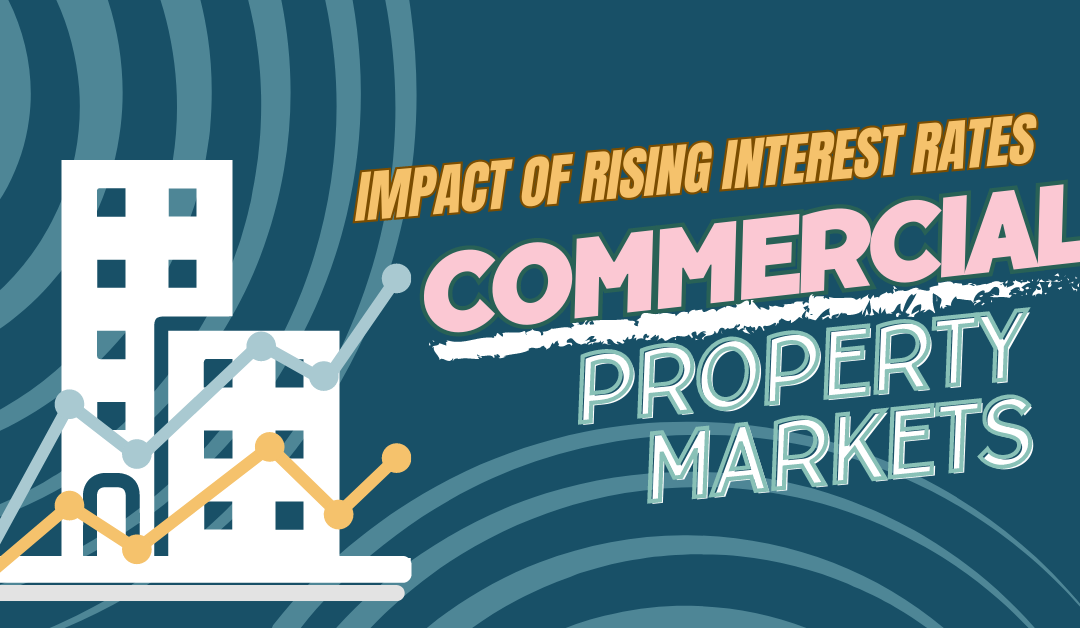In this week’s exploration of commercial property investment mechanics, we delve into the intricate relationship between interest rate hikes and the decline in commercial real estate markets.
Recent Market Trends
As we delve deeper into the mechanics of commercial property investment, a clear pattern has emerged over the past few weeks. While some segments of the market show signs of plateauing, others remain resilient. It’s becoming increasingly apparent that rising interest rates play a pivotal role in shaping these dynamics.
Crucial Role of Interest Rates
The significance of rising interest rates cannot be understated. Typically, commercial property yields should closely align with the prevailing base rate. This is crucial to ensure that investing in commercial real estate remains attractive compared to other investment avenues, such as bonds.
In most cases, a key principle holds: commercial property yields should not dip below the base rate. However, exceptions exist, primarily within prime central locations. For instance, properties in central London, Birmingham, Manchester, and Bristol continue to change hands at lower yields, defying the broader market trend.
Understanding Valuation Mechanics
To comprehend the impact of rising interest rates, it’s essential to grasp the valuation mechanics of commercial properties. A fundamental method involves calculating the capital value using the potential rental income, determined by the market rent and the year’s purchase multiplier of the risks yield.
For example, with a rental income of £30,000 and an all risks yield of 7%, the capital value can be calculated as £428,571. However, when interest rates increase by 1%, the yield rises to 8%, resulting in a reduced capital value of £375,000. This inverse relationship between yield and value is pivotal to comprehending the fluctuations in commercial property prices.
Historical Context and Yield Dynamics
Reflecting on historical trends, we recall times when commercial properties were selling at extraordinarily low yields, indicating robust market conditions. These yields were linked to perceived risks associated with properties. All risks yield serves as an overall measure of property risk, with higher yields signifying higher risks.
Factors Influencing Yields
Determining the all risks yield involves considering factors such as property location and tenant covenant strength. Prime yield guides, like Knight Frank’s, offer valuable insights into prevailing market conditions. Stronger covenant tenants, like major retailers, exhibit lower risks, while individual tenants with weaker financial standings entail higher risks.
Navigating the Changing Landscape
As interest rates and base rates experience fluctuations, commercial property prices respond in kind. While a 0.25% increase in the base rate may lead to a proportional rise in yields, other factors, such as covenant strength, impact the extent of this change.
Implications for Investors
Investors operating without borrowing have the advantage of a stable return on their investments despite interest rate shifts. However, those reliant on borrowing face challenges. Elevated commercial lending rates result in higher borrowing costs, necessitating higher yields to justify investments.
This scenario creates a domino effect: investors needing loans must raise property prices to secure higher yields than borrowing costs. Consequently, commercial property prices begin to deteriorate, driven by the dual pressures of rising interest rates and fluctuating yields.
Mitigating Strategies
For existing property owners not looking to sell soon, adopting a patient approach is prudent. Rather than hastily testing the market, closely monitor the shifting landscape. Extend lease terms, assist tenants facing difficulties, and maintain a vigilant eye on market trends.
For those actively entering the market, strategic negotiation becomes paramount. Capitalize on the lowering prices resulting from yield adjustments, although exceptions persist. Quality enhancements in properties can yield higher valuations, reflecting tenant preferences for sustainability and energy efficiency.
Conclusion
The correlation between rising interest rates, fluctuating yields, and commercial property prices underscores the dynamic nature of the market. Vigilant observation of yield trends, market guides, and interest rate movements empowers investors to navigate the evolving landscape with astuteness. As the adage goes, as yields rise, commercial property prices fall, and vice versa. By understanding and adapting to these dynamics, investors can better position themselves in the evolving commercial real estate arena.




